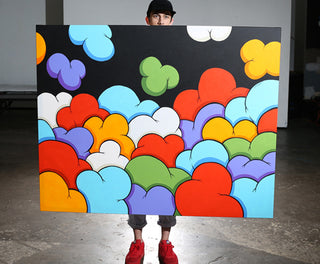“I’m a yes man, it fucking sucks!” We’re in the kitchen at The Hundreds Homebase and Hawaiian post-pop artist Aaron Kai‘s telling us about how he finally began to make a living from his art, freelancing full-time. He just kept saying yes. After several drab gigs at copy centers where he’d “just draw all day,” his nighttime hustle finally paid off and the commissions started lining up a bit too much (he used to pass out handdrawn business card stickers with Chief Keef lyrics on them at streetwear events and art shows). All this on top of his other gig as co-founder and designer of Hawaiian streetwear brand Lemon®.
As a kid, he started out doodling super tight versions of Dragon Ball Z’s Super Saiyan Vegeta as a way to isolate himself from the claustrophobia of his family home on the Big Island. A few years later, he was sketching out waves during class to jog his memory of that morning’s surf. These days, he still prefers the high-contrast primary color palette of a crayon box, and he’s still obsessed with those same swells. But instead of drawing them to serve his own memory, he’s now painting them to be remembered for it. Rather than Vegeta, his recent works depict waves that look like women, and post-pop themes that he deems iconic to millennials, like forties, weed, and babes. In our interview below, Aaron discusses motivation, starting his brand Lemon®, big city San Francisco by way of small town Hilo, Hawaii, and building a lasting legacy.
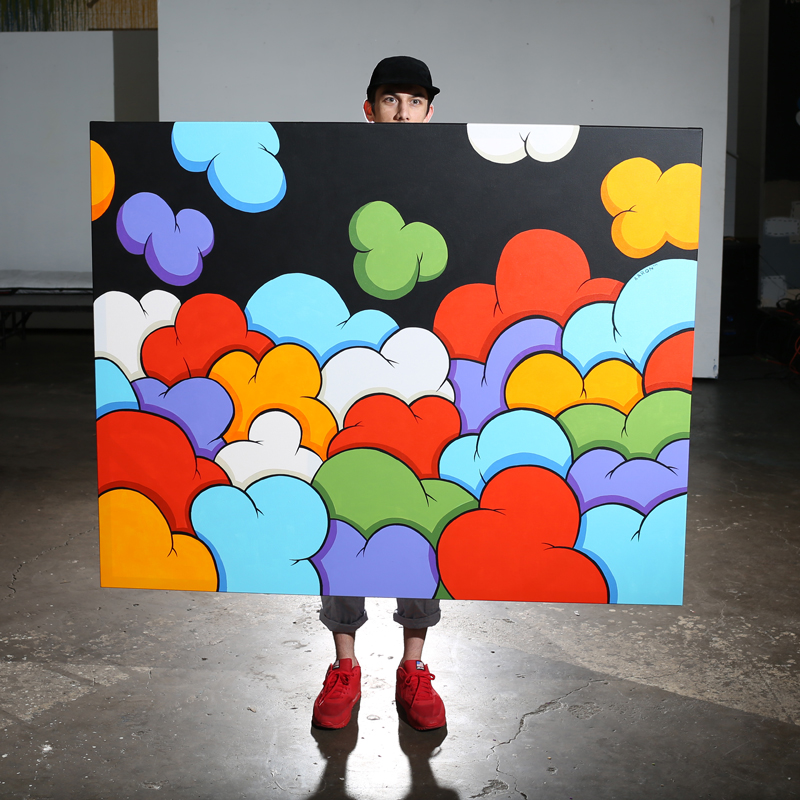
ALINA: I read that you started drawing when you were a kid and that you were really into Dragon Ball Z. I was curious about why you think drawing became such an obsession for you. Did you have a lot of free time?
AARON: Honestly, when I was younger, I would get grounded a lot. I’ve only read one book in my entire life. It’s the most fascinating, pathetic thing! It was called The Tattoo. I hated reading, I hated doing school work, I would get grounded a lot by my parents and when I was grounded, I couldn’t go outside to play, couldn’t watch TV or use the computer, so I would stay in and draw. It was a way to sit there and have my own time. It’s kind of what I still do today... if I’m painting and someone talks to me, I won’t really listen to them. It’s one of those things that I use to mute everyone else out.
Everyone was fascinated with it too... everyone at school and even my sister and brother and parents. It was like, you’re mad at me and you grounded me... but you’re praising me because I’m good at drawing?
Do you think that those compliments and positive enabling helped you?
Yeah. For example if I post something on Instagram and get a shit load of likes, I’m like, “Damn, hell yeah!” It makes me wanna draw something right then and there. Same thing if I do a project and people see it and it gets a good response then that kind of motivates me to do more work.
If you are facing critique, how do you react to that?
In the same way, I just want to draw again. Fix it.
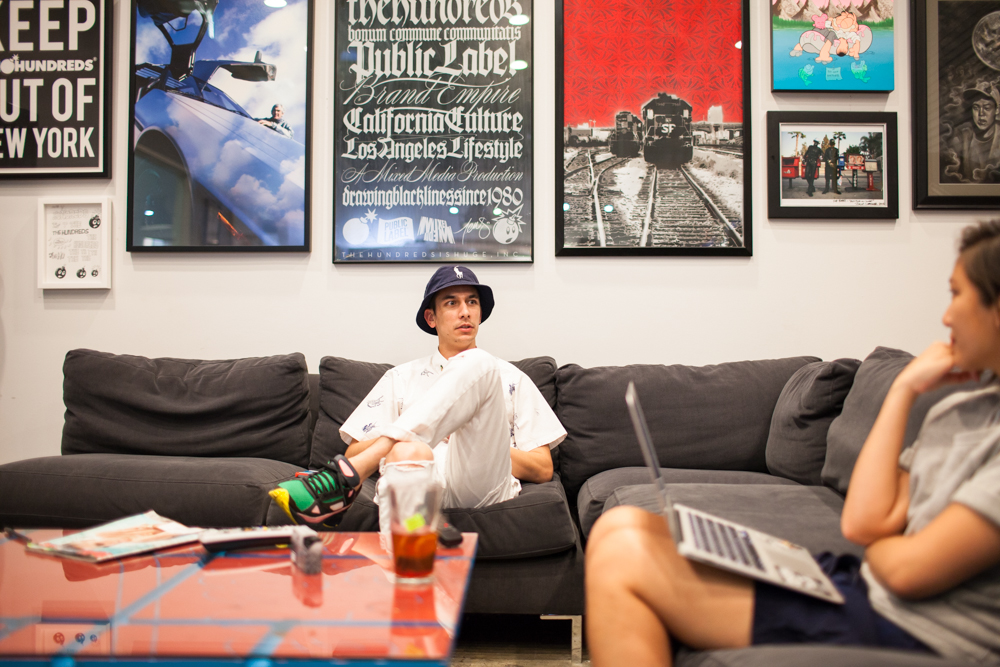
What was one of the first things that you really liked to draw when you were younger?
Dragon Ball Z characters. I used to draw anybody that’s Super Saiyan. [laughs]
Who was your favorite character? Goku?
It was Vegeta actually, because his hair was cooler, it went straight up. And then Gohan when he hit his teen years, when he was training with Piccolo. He had the cape and he had this purple suit. I thought about it: If somebody tried to recreate these things in high fashion, Gohan’s Piccolo outfit would be pretty swagged out. Purple joggers with brown leather running shoes. I started drawing from there and then in freshmen year of high school, I picked up surfing.
It makes sense that you would gravitate towards surfing because, like drawing, it’s something that you could do alone.
It’s more fun, more expressive. You could be out there practicing surfing, but in reality you’re just surfing. Basketball practice—you’re out there running drills, you don’t run drills in surfing.
Is that when you started to draw waves?
I’ve been fascinated with surfing and looking at the way the waves fell and how they looked since high school. I would have my friend—who got sponsored by Quiksilver when we were 16— pick me up at 4:30 in the morning, we’d surf, and then we would go to school. I would be in school thinking about our morning surfing, so I would just draw waves. After school, I’d go back to the beach, then home, repeat.
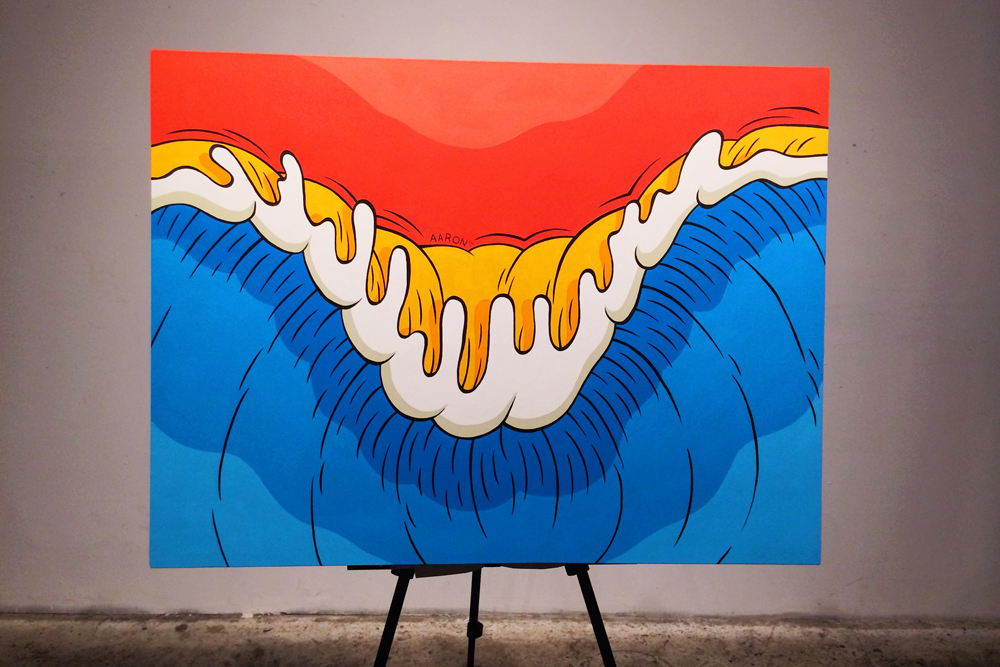
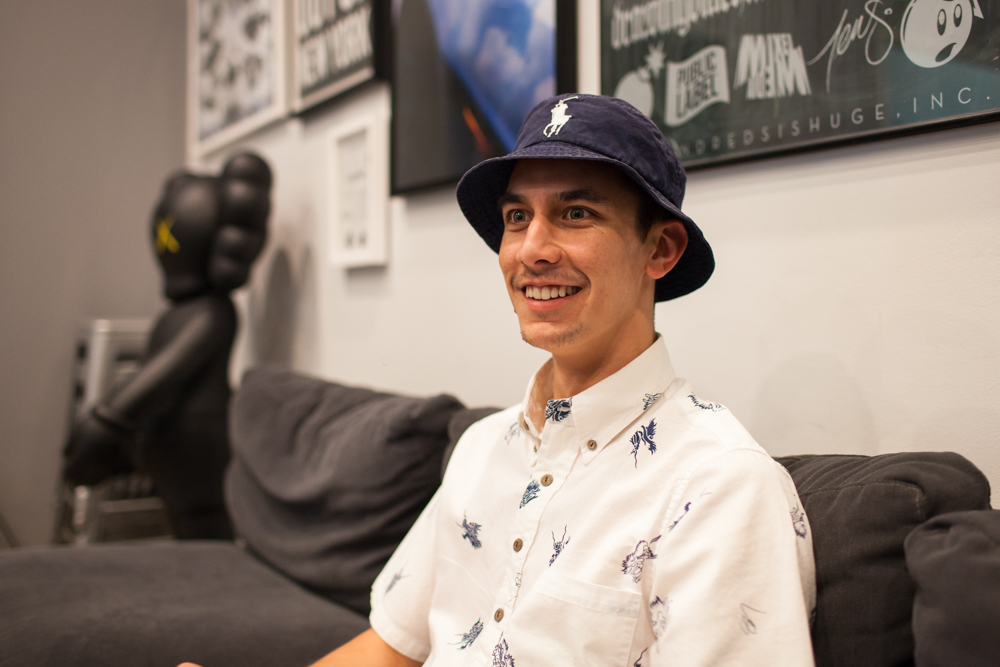
You and Kyle both run the brand Lemon®. At the beginning, what was the reason you wanted to start printing your work on shirts? Did you want a different canvas? Was it to make some extra cash?
It was one of my friends, actually, that came up to me and was like, “You draw? My mom has this screen printing machine, so could put your drawings on some T’s.” I was like, “Alright, well how do we do it?” Back then, we started off with drawing in sharpie. We’d scan it in, white out the areas, go to Office Max, get some transparencies printed out, give them to his dad, and his dad would burn it, print it.
Kyle was trying to make money because he got into Stanford, so he was saving to move up and have start up cash. 2 G’s or something. I was just doing it for the fuck of it. Some of my friends ended up wanting to buy some of them from me and I was like, “Really? I made like 8 of them so I could wear them myself.” So I made more.
When did Lemon® get serious?
It was 4/20 one year and we were on the bus and ate brownies or something and we thought, “We need to do something again.” At that point we were only going to school, we weren’t doing anything. Then we decided—“You did T-shirts, I did T-shirts, let’s make some T-shirts.” That’s how that started. On a bus ride on 4/20 high on brownies.
[The first store to begin carrying Lemon® was] Leilow, which was run by Jules Gayton, one of the original Stussy tribe members—their first DJ. It was tight because Jules also carried Neighborhood Japan, Original Fake, Supreme. He had some Bape shit too. We were stoked.
Is there an item you’re really excited about from Lemon®’s upcoming collection?
I’m really excited about our full-zip “Fire Camo” hoodie. It’s a piece that took some time to get done, but I’m really excited to show people the abstract flames on the hoodie and other offerings such as shorts and a bucket hat.
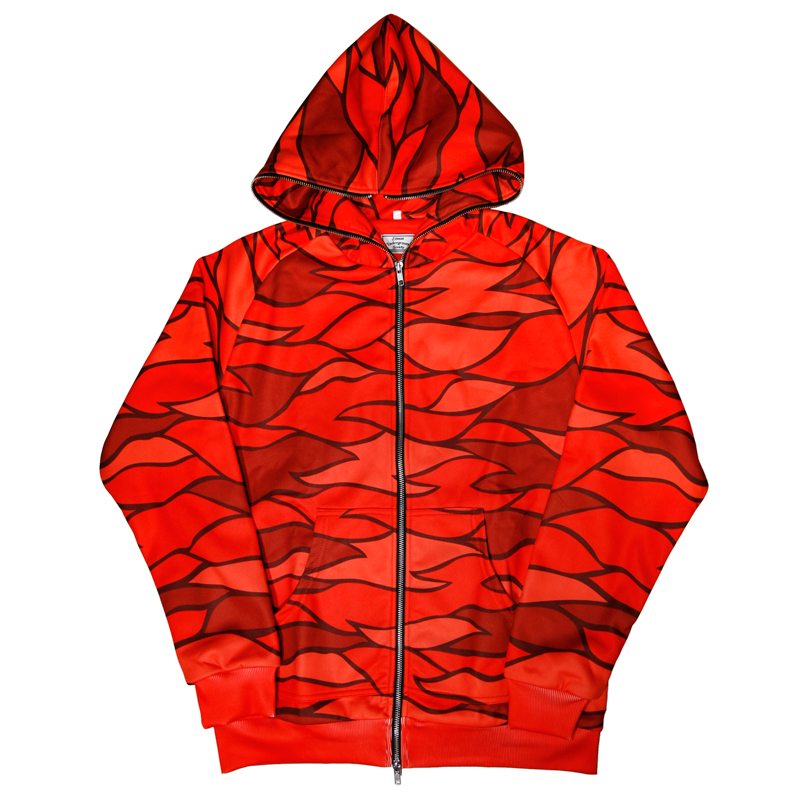
Lemon®’s full zip “Fire Camo” hoodie.
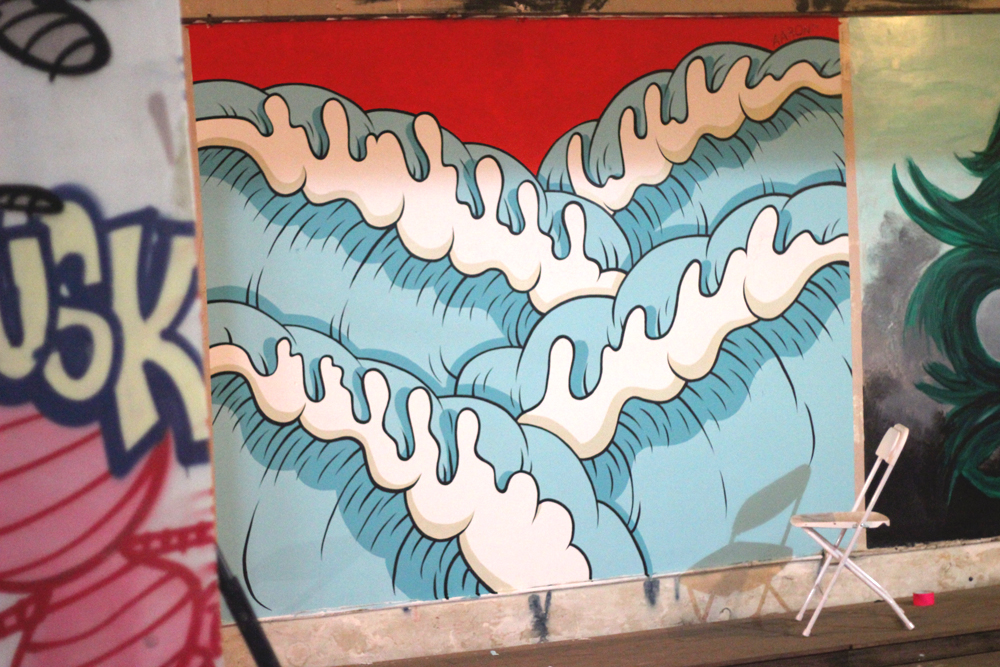
So when you first moved to San Francisco, coming from a local intimate atmosphere of Hawaii, and then going to the big city, how was that transition like? And did it affect the themes of your art?
Yeah, I think so. I really liked the transition because I’m from Hilo, and just to put it into perspective, we didn’t get a Wal-Mart until I was 12, and prior to that Wal-Mart, the only thing in that spot was a pasture and a horse. A single horse.
We didn’t have these stores that establish you as being a real city. So coming from a town where everybody knows each other and everybody is in each other’s business, it’s kind of refreshing to go somewhere where you can be more transparent. There was a bunch of small town bullshit.
What do you mean when you say you can be more transparent in San Francisco?
You can walk down the street and you don’t know anybody so you don’t need to stop and make small talk with people. There’s more like-minded people as well, more people who are into shoes. It was me and my brother, we were the only people buying sneakers in Hilo and people would tease us because we had high-top Nikes.
I noticed, thematically, on your Instagram you have a lot of stuff with sneakers and forties and booty. Is that something you just began to incorporate into your art? It seems like people respond better to that.
I had a better response with that kind of “ratchet” stuff because I started doing it early last year in late 2012. I started to draw more relatable youthful things and it got a really good response. I was listening to a lot of trap music. Chief Keef’s album came out, so I was also writing a lot of rap quotes on these little stickers that I would give out, which actually helped me out a lot. It was like my business card, but [since] it was a sticker, you could actually use it. They were all hand drawn. A conversational piece.

How would you describe your take on post-pop?
I would describe post-pop as our generation’s pop art because we’re veering away from your standard pop art, with very colorful and iconic objects, transitioning into new iconic things. To us, a forty is iconic—some weed, some bitches, it’s all iconic now.
Can you talk a little bit about your color palette? Zach, our videographer, was talking about how you stick to a generally limited palette. Is that a deliberate choice?
To me, it’s like getting an eight pack of crayons and you gotta work with what you have. I also like heavily-contrasted colors like red and blue, because it clashes so bad that you’re forced into looking at it. I mainly use red, yellow, blue, white, purple here and there, green here and there, orange here and there. But mainly primary colors.
So I know you just turned 25 and some people hit that quarter life crisis. How do you feel about hitting this quarter point in your life and what kind of goals have you set for yourself right now?
I want to have an actual savings account by the end of this year [laughs]. That’s the biggest thing for me right now, just trying to save money. My dad put it the best way, “If you don’t have to worry about your finances then you can be as creative as you want.” That’s really the only thing that you actually have to worry about in life. Even as far as relationships we choose, too. You need to worry about your finances and where you’re going to stay.
But at the same time keep progressing as an artist and opening up new doors with different people and building relationships. Having my name out there. I want to be a legend one day, so it’s time to start that. Try to take the steps in that direction to make things and do things that are going to stay for a while and be remembered. Building a legacy.
***
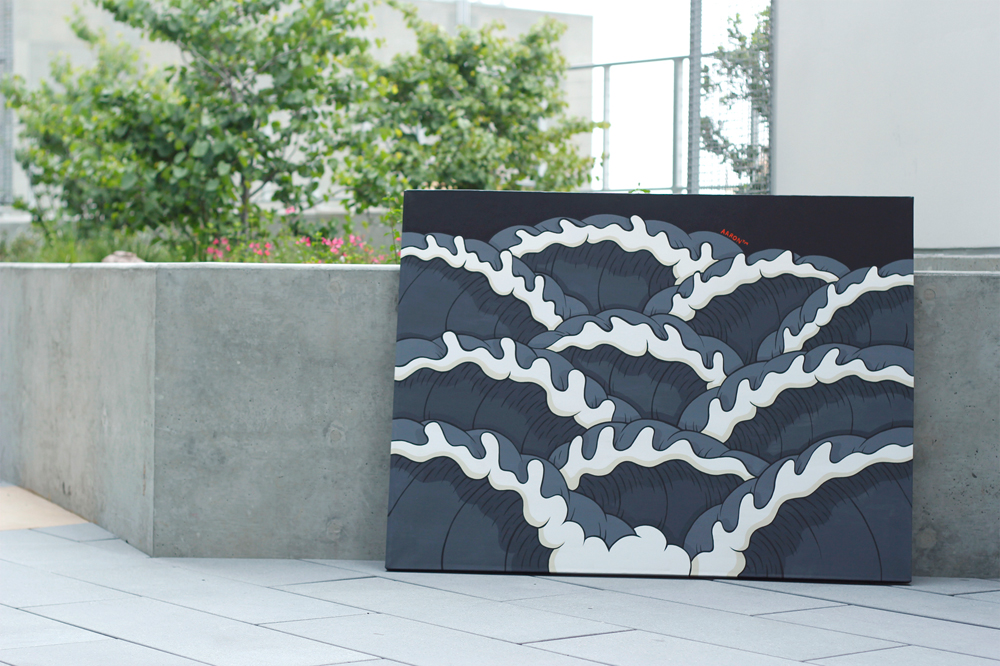
You can follow Aaron Kai’s entertaining Instagram @aaronkkai. Check out Lemon® on Instagram @lemonhi and their site at lemonhi.com.
Words by Alina Nguyen.

